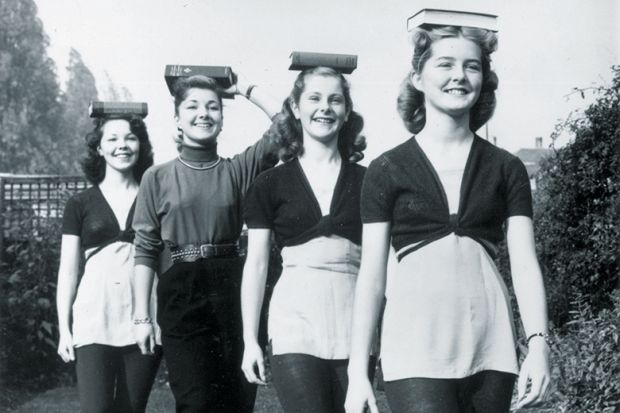In the preface to Stand Up Straight!, the author half-apologises for the “anecdotal rather than exhaustive” nature of his 10 chapters. Far from a problem, however, this anecdotal approach is inseparable from Sander Gilman’s ambitious aim: proving the significance of posture in Western history. As he suggests, the human ability to stand results from “sets of muscles and ligaments and bodily systems” – but our determination to stand up straight reveals much about “what we believe and what the implications of such beliefs are”. Gilman skilfully traces our understanding of posture from the earliest Homo through classical civilisation and on to post-war art movements and contemporary working practices.
Driving the chapters forward, however, is not chronology but rather the multiple discourses ensuring that the body politic stand upright. Gilman’s multidisciplinary approach draws on theology, philosophy, the military, medicine and art. Greek philosophers debate the precise location of humanity within physiognomy (for Aristotle, bipedalism; Anaxagoras favours hands) but agree that “being erect moves man towards the gods”. Gilman’s reading of Immanuel Kant suggests an origin for the enduring link between stance and morality. For Kant, humanity’s stunted, crooked, twisted form must strive towards physical, social and moral “uprightness”: achieve moral soundness and one’s body will follow.
Gilman deftly threads the striking image of the plumb line throughout, using this trope to turn anecdote into data. While Kant pondered moral straightness, “posture books” offered practical military advice. Stand Up Straight!’s illustrations are wonderful, particularly those depicting balletic pike-men emulating their weapon’s long lines, a forerunner of parade-ground rigidity. Nineteenth-century discourses on social citizenship adapted the plumb line, as in the case of Kaiser Wilhelm II’s ladies-in-waiting, trained by “body culturist” Bess M. Mensendieck (I stood in Mensendieck’s required position for three minutes: ouch!). Plumb-line ideals stiffened the moral body, informing the use of women’s corsets, invalids’ back braces and even rigid swaddling for babies. Children and adults were shaped by social institutions: education and citizenship, respectively. Sigmund Freud’s work on neurosis drew on “uprightness”, while no less an authority than Charles Darwin believed that only bipedal man – using his free hands – could express anger. Gilman’s authoritative voice marshals a crowd of examples into a cogent, illuminating analysis.
Cleverly, each chapter amplifies what comes before, until socio-moral “soundness” and physical verticality are linked beyond question. Only then do the final three chapters make distressingly clear what such links mean for non-normative bodies. Again and again, a nation’s symbolic “straightness” is maintained through dehumanising the “crooked”: Native American children forced into corrective shoes; Blood and Soil in Nazi Germany; persecution of disabled bodies; antisemitic feeling legitimised through categories of straight/slouched, patriotic/traitor, useful/parasite; these same categories justifying slavery. As Gilman sharply observes, persecutors (race scientists in his example) love “such seemingly objective classification”. His final section, demonstrating posture’s central significance to disability studies, stands out as particularly significant.
What Gilman demonstrates so successfully is that any history of posture is always a history of perception. The title’s bold imperative is a command barked at those whose posture supposedly imperils the nation, causes moral degeneration or decreases productivity. He has produced a valuable book.
Louisa Yates is director of collections and research at Gladstone’s Library, and a visiting lecturer in English at the University of Chester.
Stand Up Straight!: A History of Posture
By Sander L. Gilman
Reaktion Books, 424pp, £25.00
ISBN 9781780239248
Published 7 March 2018
POSTSCRIPT:
Print headline: Shoulders back, neck aligned
Register to continue
Why register?
- Registration is free and only takes a moment
- Once registered, you can read 3 articles a month
- Sign up for our newsletter
Subscribe
Or subscribe for unlimited access to:
- Unlimited access to news, views, insights & reviews
- Digital editions
- Digital access to THE’s university and college rankings analysis
Already registered or a current subscriber?




